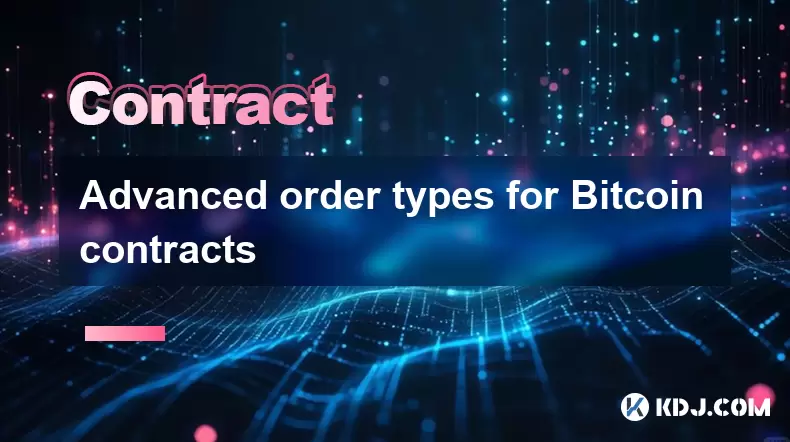-
 Bitcoin
Bitcoin $118100
0.44% -
 Ethereum
Ethereum $3765
5.84% -
 XRP
XRP $3.498
3.12% -
 Tether USDt
Tether USDt $1.000
0.00% -
 BNB
BNB $753.2
3.41% -
 Solana
Solana $181.7
3.58% -
 USDC
USDC $0.9999
0.01% -
 Dogecoin
Dogecoin $0.2704
12.75% -
 Cardano
Cardano $0.8684
5.85% -
 TRON
TRON $0.3151
-0.86% -
 Hyperliquid
Hyperliquid $46.06
4.51% -
 Stellar
Stellar $0.4695
2.48% -
 Sui
Sui $3.910
3.18% -
 Chainlink
Chainlink $19.36
6.65% -
 Hedera
Hedera $0.2750
3.99% -
 Bitcoin Cash
Bitcoin Cash $544.6
6.31% -
 Avalanche
Avalanche $25.12
3.69% -
 Shiba Inu
Shiba Inu $0.00001559
5.40% -
 Litecoin
Litecoin $116.8
5.10% -
 UNUS SED LEO
UNUS SED LEO $8.991
0.05% -
 Toncoin
Toncoin $3.283
2.79% -
 Polkadot
Polkadot $4.509
3.97% -
 Uniswap
Uniswap $10.67
6.58% -
 Ethena USDe
Ethena USDe $1.001
-0.01% -
 Monero
Monero $323.2
0.48% -
 Pepe
Pepe $0.00001410
6.37% -
 Bitget Token
Bitget Token $4.964
1.93% -
 Dai
Dai $0.9998
-0.01% -
 Aave
Aave $326.2
3.85% -
 Bittensor
Bittensor $421.8
2.46%
How to hedge Bitcoin holdings with futures?
Bitcoin futures allow investors to hedge against price declines by locking in a future sale price, reducing risk without requiring ownership of the asset.
Jul 17, 2025 at 10:07 am

Understanding Bitcoin Futures
Bitcoin futures are financial contracts that allow investors to buy or sell Bitcoin at a predetermined price on a future date. These instruments enable market participants to speculate on the future price of Bitcoin without actually owning the asset. For holders of Bitcoin, futures contracts can serve as a powerful hedging tool against potential declines in the value of their holdings.
In traditional finance, hedging is a strategy used to offset potential losses in one investment by taking an opposite position in a related asset. In the context of Bitcoin, this means that if you own Bitcoin and fear a short-term price drop, you can use Bitcoin futures to mitigate the risk. By selling (shorting) Bitcoin futures, you lock in a price for your holdings, which can help reduce the impact of adverse price movements.
How Hedging with Futures Works
When you hedge Bitcoin with futures, the goal is to balance any loss from a decline in Bitcoin's spot price with gains from your futures position. Suppose you hold 10 BTC and believe the price might fall over the next month. To hedge, you could enter into a short Bitcoin futures contract equivalent to your holding size. If the price drops, your Bitcoin portfolio loses value, but your futures position gains, helping to offset the loss.
This process involves several key components:
- The underlying asset, which is Bitcoin.
- The contract size, typically measured in Bitcoin units or USD value.
- The expiration date, when the contract must be settled.
- The leverage, which allows traders to control larger positions with smaller capital.
By aligning these parameters with your Bitcoin holdings, you can create a risk-mitigated position that protects against downside volatility while still allowing participation in potential upside movements if the hedge is partial.
Selecting the Right Futures Exchange
Not all futures exchanges offer the same quality of service, liquidity, or security. Choosing the right platform is crucial for effective hedging. Popular exchanges such as Binance Futures, Bybit, and OKX provide Bitcoin futures contracts with varying degrees of leverage and settlement options.
When evaluating a futures exchange, consider the following factors:
- Liquidity: High trading volume ensures you can open and close positions quickly without significant slippage.
- Funding rates: Perpetual futures contracts charge funding fees periodically; understanding how they affect your position is essential.
- Margin requirements: Determine whether the exchange offers isolated or cross-margin systems and how much collateral is needed.
- Security: Ensure the exchange has robust measures to protect user funds and personal information.
Once you've selected a suitable exchange, create an account, complete KYC verification (if required), and deposit funds into your futures wallet before proceeding.
Steps to Hedge Your Bitcoin Position
To hedge effectively, follow these steps carefully:
- Determine the amount of Bitcoin to hedge: Decide what percentage of your holdings you want to protect. Full hedging covers 100% of your position, while partial hedging leaves room for upside exposure.
- Choose the type of futures contract: Decide between perpetual contracts, which don’t have an expiration date, or fixed-term futures, which expire on a set date.
- Calculate contract size: Match the number of futures contracts to your Bitcoin holdings. For example, if each contract represents 1 BTC and you own 5 BTC, shorting five contracts would fully hedge your position.
- Open a short futures position: Place a sell order for the calculated number of contracts using either market or limit orders.
- Monitor and adjust: Keep track of your futures and spot positions. If you rebalance your Bitcoin holdings, update your futures position accordingly.
Always ensure that you understand the leverage settings and liquidation thresholds to avoid unexpected losses due to margin calls.
Risks and Considerations in Hedging with Futures
While hedging with Bitcoin futures can reduce downside risk, it also introduces certain complexities and risks:
- Basis risk: This occurs when the price of the futures contract does not move in line with the spot price, leading to imperfect hedging.
- Funding rate costs: Holding perpetual futures long-term may incur recurring funding fees, which can erode profits.
- Liquidation risk: Using high leverage increases the chance of liquidation if the market moves against your position.
- Counterparty risk: Although minimal on major platforms, there’s always some risk associated with the exchange itself.
Furthermore, regulatory uncertainty surrounding cryptocurrency derivatives can impact the availability and legality of futures trading in certain jurisdictions. Always check local laws before engaging in futures trading activities.
FAQs About Hedging Bitcoin with Futures
Q: Can I hedge Bitcoin with options instead of futures?
A: Yes, Bitcoin options provide another hedging mechanism, offering more flexibility than futures since they grant the right—but not the obligation—to buy or sell Bitcoin at a set price. However, options typically cost more due to premium payments.
Q: What happens if my Bitcoin futures contract expires while I’m hedging?
A: If you're using fixed-term futures, the contract will settle upon expiration. You can either roll over your position to a new contract or let it expire, depending on your ongoing hedging needs.
Q: Do I need to use leverage when hedging with Bitcoin futures?
A: Leverage is optional. While it allows you to hedge larger positions with less capital, it also increases margin requirements and the risk of liquidation. Conservative hedgers often prefer using no or low leverage.
Q: Is hedging with Bitcoin futures suitable for beginners?
A: Hedging requires a solid understanding of both spot markets and derivatives. Beginners should first gain experience with small positions and thoroughly understand margin mechanics, funding rates, and order types before implementing complex hedging strategies.
Disclaimer:info@kdj.com
The information provided is not trading advice. kdj.com does not assume any responsibility for any investments made based on the information provided in this article. Cryptocurrencies are highly volatile and it is highly recommended that you invest with caution after thorough research!
If you believe that the content used on this website infringes your copyright, please contact us immediately (info@kdj.com) and we will delete it promptly.
- Tezos, Conflux, and the Altcoin Rebound: What's Driving the Surge?
- 2025-07-21 14:50:12
- Giants Protocol Token Launch: Revolutionizing Asset Ownership with Blockchain Innovation
- 2025-07-21 15:30:12
- DeFi Evolution: Data Oracles and NFT Integration Leading the Charge
- 2025-07-21 14:30:12
- Super Apps, Stablecoins, and Future Payments: A NYC Perspective
- 2025-07-21 14:30:12
- Cardano (ADA) Price Surges Amid Bitcoin ATH Buzz: What's Next?
- 2025-07-21 12:30:11
- Bitcoin, UK, and Sale: Decoding the Crypto Buzz in Britain
- 2025-07-21 12:30:11
Related knowledge

What is a maker vs a taker fee?
Jul 19,2025 at 01:14am
Understanding the Basics of Cryptocurrency Exchange FeesIn the world of cryptocurrency trading, maker vs taker fees are a fundamental concept that eve...

How to analyze Bitcoin futures data from CME?
Jul 19,2025 at 05:22pm
Understanding Bitcoin Futures on CMEBitcoin futures on the CME Group (Chicago Mercantile Exchange) represent a regulated financial instrument that all...

Advanced order types for Bitcoin contracts
Jul 21,2025 at 01:14pm
Understanding Advanced Order Types in Bitcoin ContractsIn the world of Bitcoin futures trading, advanced order types play a crucial role in managing r...

Common mistakes in crypto futures trading
Jul 20,2025 at 09:56pm
Overleveraging Without Risk ManagementOne of the most common mistakes in crypto futures trading is overleveraging. Traders often believe that using hi...

How to understand the liquidation price?
Jul 19,2025 at 10:00pm
What Is a Liquidation Price in Cryptocurrency Trading?In the realm of cryptocurrency futures and margin trading, the liquidation price refers to the s...

What is the maximum leverage for Bitcoin futures?
Jul 20,2025 at 03:42pm
Understanding Leverage in Bitcoin FuturesLeverage in Bitcoin futures refers to the use of borrowed capital to increase the potential return on investm...

What is a maker vs a taker fee?
Jul 19,2025 at 01:14am
Understanding the Basics of Cryptocurrency Exchange FeesIn the world of cryptocurrency trading, maker vs taker fees are a fundamental concept that eve...

How to analyze Bitcoin futures data from CME?
Jul 19,2025 at 05:22pm
Understanding Bitcoin Futures on CMEBitcoin futures on the CME Group (Chicago Mercantile Exchange) represent a regulated financial instrument that all...

Advanced order types for Bitcoin contracts
Jul 21,2025 at 01:14pm
Understanding Advanced Order Types in Bitcoin ContractsIn the world of Bitcoin futures trading, advanced order types play a crucial role in managing r...

Common mistakes in crypto futures trading
Jul 20,2025 at 09:56pm
Overleveraging Without Risk ManagementOne of the most common mistakes in crypto futures trading is overleveraging. Traders often believe that using hi...

How to understand the liquidation price?
Jul 19,2025 at 10:00pm
What Is a Liquidation Price in Cryptocurrency Trading?In the realm of cryptocurrency futures and margin trading, the liquidation price refers to the s...

What is the maximum leverage for Bitcoin futures?
Jul 20,2025 at 03:42pm
Understanding Leverage in Bitcoin FuturesLeverage in Bitcoin futures refers to the use of borrowed capital to increase the potential return on investm...
See all articles

























































































